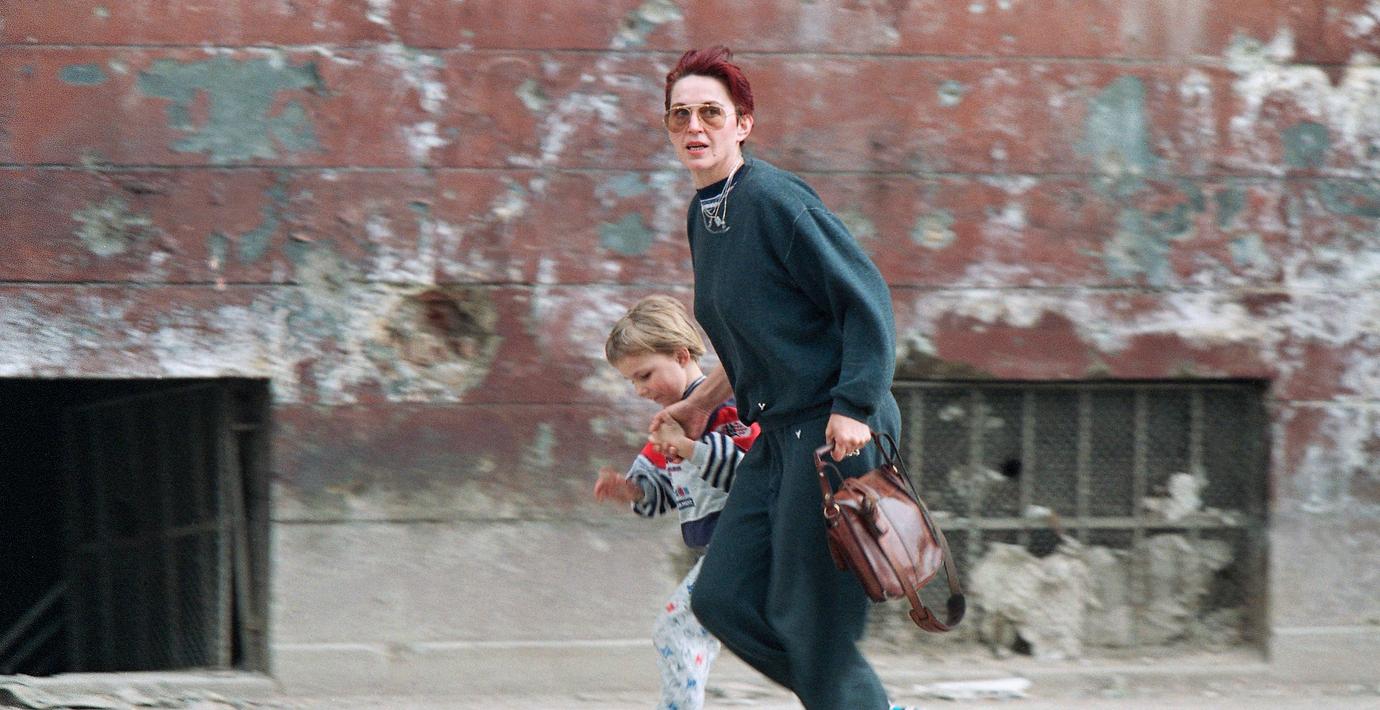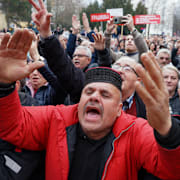
Italien utreder ”turism” till Sarajevo för prickskytte
Åklagare i Milano har inlett en utredning om italienare som misstänks ha betalat den bosnienserbiska milisen för att få skjuta civila under belägringen av Sarajevo 1992–1996. Det rapporterar La Repubblica.
Rika vapenentusiaster med kopplingar till högerextrema kretsar ska ha gett uppåt en miljon kronor för att få ägna sig åt vad som beskrivits som en slags ”mänsklig safari”.
Bergen runt Sarajevo gjorde det enkelt för prickskyttarna att träffa människor som skräckslaget rörde sig i staden, skriver The Guardian.
Anklagelserna bygger på vittnesmål som framkommit i dokumentärfilmen ”Sarajevo Safari” från 2022. Även andra nationaliteter misstänks ha deltagit.
bakgrund
Belägringen av Sarajevo
Wikipedia (en)
The siege of Sarajevo (Serbo-Croatian: Опсада Сарајева, romanized: Opsada Sarajeva) was a prolonged military blockade of Sarajevo, the capital of Republic of Bosnia and Herzegovina, during the ethnically charged Bosnian War. After it was initially besieged by Serbian forces of the Yugoslav People's Army, the city was then besieged by the Army of Republika Srpska. Lasting from 5 April 1992 to 29 February 1996 (1,425 days), it was three times longer than the Battle of Stalingrad and more than a year longer than the siege of Leningrad, making it the longest siege of a capital city in the history of modern warfare.
When Bosnia and Herzegovina declared independence from Yugoslavia after the 1992 Bosnian independence referendum, the Bosnian Serbs—whose strategic goal was to create a new Bosnian Serb state of Republika Srpska (RS) that would include Bosniak-majority areas—encircled Sarajevo with a siege force of 13,000 stationed in the surrounding hills. From there they blockaded the city, and assaulted it with artillery, tanks, and small arms, dropping at least 500,000 bombs.
Units of the Army of the Republic of Bosnia and Herzegovina (ARBiH) inside the city, who numbered around 70,000 troops, without heavy weapons or armor, defended much of the urban area of the city throughout the war but were unable to break the siege, which was lifted following the signing of the Dayton Agreement on 14 December 1995.
A total of 13,952 people were killed during the siege, including 5,434 civilians. The ARBiH sustained 6,137 fatalities, while Bosnian Serb military casualties numbered 2,241 killed soldiers. The 1991 census indicates that before the siege, the city and its surrounding areas had a total population of 525,980. According to some estimates, the total population of the city proper prior to the siege was 435,000. Estimates of the population of Sarajevo after the siege ranged from 300,000 to 380,000. Sarajevo's population endured up to six months without gas, electricity or water supply during certain stages of the siege.
After the war, the International Criminal Tribunal for the former Yugoslavia (ICTY) convicted four Serb officials for numerous counts of crimes against humanity which they committed during the siege, including terrorism. Stanislav Galić and Dragomir Milošević were sentenced to life imprisonment and 29 years imprisonment respectively. Their superiors, Radovan Karadžić and Ratko Mladić, were also convicted and sentenced to life imprisonment.
Omni är politiskt obundna och oberoende. Vi strävar efter att ge fler perspektiv på nyheterna. Har du frågor eller synpunkter kring vår rapportering? Kontakta redaktionen


